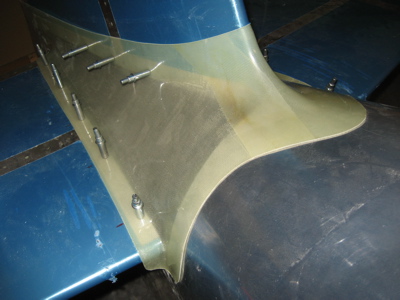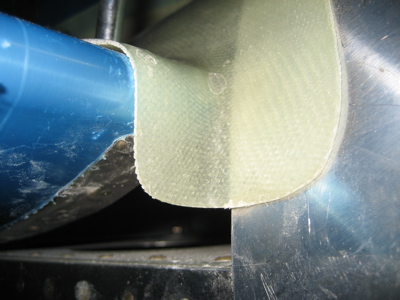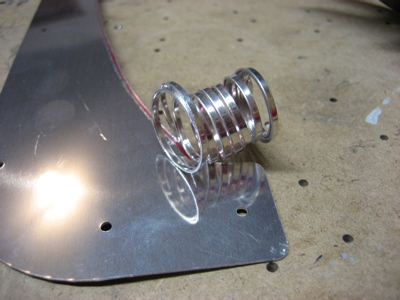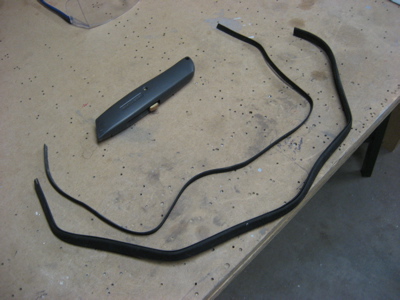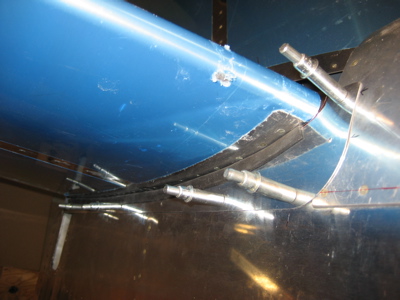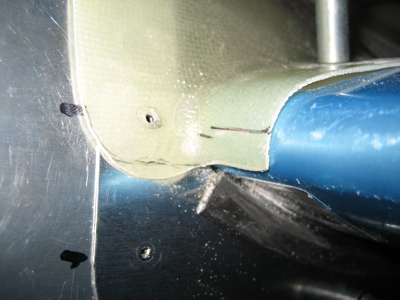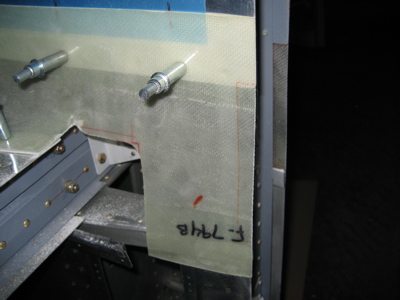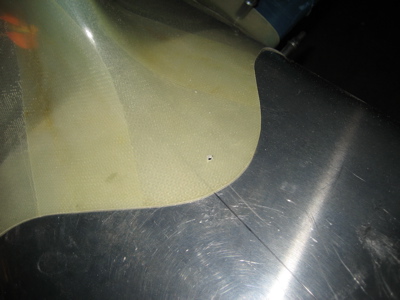The next milestone in this little odyssey is to get the engine mount installed. But I decided to first install the hinges that will attach the lower part of the cowling to the firewall. Others have reported problems getting enough access to set the rivets once the engine mount is in place, so I figured why not save myself some trouble and avoid that problem entirely.
The plans don't actually tell you how long to make each of the four hinge pieces that are required, but I was able to puzzle it out by looking at the rivet callouts on drawing 28. I clamped each piece to the outside face of the firewall flange and back drilled using the prepunched and pre-dimpled holes as a gude.
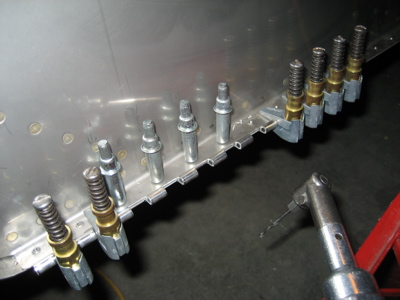
Before I put in the rivets that attach the fuselage side skins to the firewall, I squeezed a bead of red RTV in the gap between the two surfaces, to help seal the cabin from exhaust fumes and smoke (hopefully not applicable). The lower flange seems to have been sealed with proseal by the quickbuild factory, but I don't think proseal is especially heat-resistant so I went with the high-temp RTV.
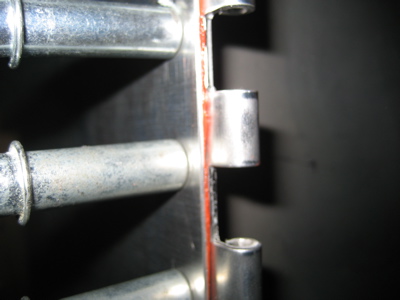
Here the hinges have been riveted to the side and bottom firewall flanges.
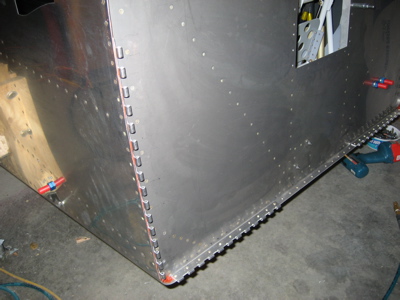
At both of the bottom corners of the firewall, I laid down a fairly thick fillet of RTV to cover over a gap that was about 1/16" on both sides. A lot of nasty fumes could have gotten in through here. Also, if I was smart I would have waited until the glue was dry before doing stuff that made drill chips, but oh well.
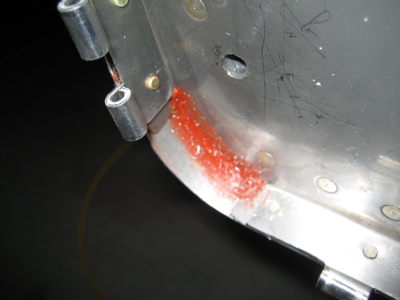
I turned off the shop lights and put my work light inside the fuselage to look for unsealed gaps. The only light coming from the sides and bottom of the firewall was through the engine mount bolt holes, so I'd say this part of the firewall is sealed.
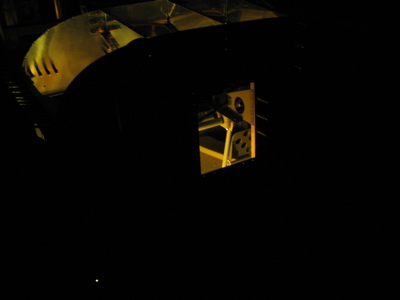
While I had the RTV uncorked I put down another fillet to seal around the hole in the firewall where the brake fluid reservoir pokes through.
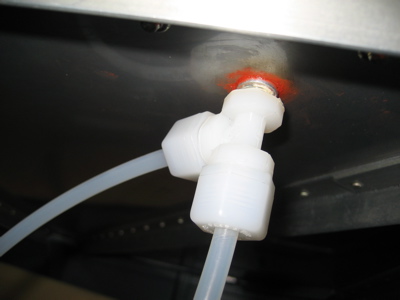
Of course as soon as I started trial-fitting the engine mount, I discovered that the taildragger gear leg sockets interefered with the outermost hinge eyelets, so I had to cut off part of my newly installed hinges. Oh well, it's easier to make them shorter than longer.
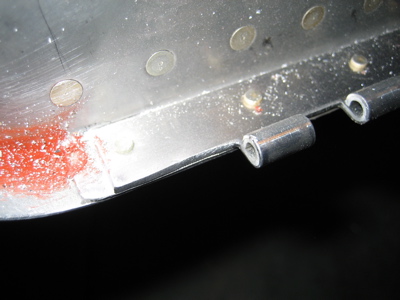
The engine mount is attached to the fuselage with six 3/8" bolts. In four of those locations, there are 1/4" pilot holes already drilled by the quickbuilders. I think what I'll do in order to get a perfect fit is grab some steel tubing from Airparts and make up some 3/8" OD, 1/4" ID bushings. That should let me bolt the mount to the firewall through two or more of the undersized pilot holes, the drill and ream each hole up to final size without worrying about how to clamp the mount to the fuselage.

